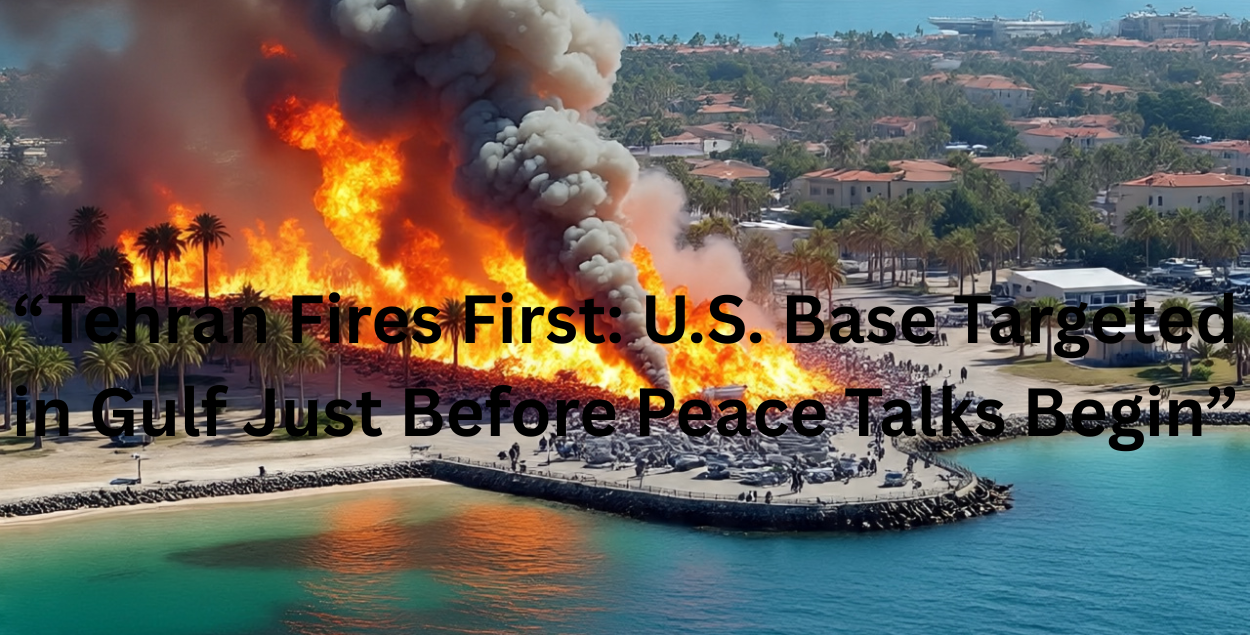FnF News
FNF News | Gulf Crisis & U.S.–Iran Confrontation
Published: June 27, 2025
By: Khadija Khan, Chief Defense Affairs Editor – FNF
Iran Fires 19 Missiles at U.S. Al‑Udeid Base as Nuclear Talks Begin in Doha
In a calculated and dramatic escalation, Iran launched 19 ballistic missiles targeting the U.S.-operated Al‑Udeid Air Base in Qatar, the largest U.S. military installation in the Middle East. The assault, dubbed “Operation Glad Tidings of Victory,”, occurred just hours before American and Iranian diplomats convened in Doha for nuclear negotiations.
U.S. Central Command confirmed that 18 missiles were intercepted by U.S. and Qatari Patriot batteries—a defense crew of just 44 soldiers manned two Patriot systems in what was described as “the most extensive Patriot engagement in Gulf history.” One missile landed outside the base perimeter without causing damage or injury (businessinsider.com).
A Precision Strike with Pre-Planned Defense
Iran deliberately matched its missile tally to the U.S. bunker-buster attacks on Fordow, Natanz, and Isfahan nuclear sites days earlier (reuters.com). Prior intelligence and back-channel warnings enabled Qatar to shut its airspace and activate a layered defense network, including Patriot, THAAD, NASAMS, Rapier, and Roland systems (businessinsider.com). General Dan Caine hailed the Patriot crews: “They had 120 seconds to either succeed or fail”—and succeeded they did (businessinsider.com).
Ceasefire Shattered by Missile Fire
A U.S.-mediated ceasefire with Israel announced days before this strike unraveled rapidly. Israeli jets resumed operations in Syria while Iran launched drones and cyberattacks in a coordinated response. Proxy groups like Hezbollah and the Houthis have since entered high alert status (theguardian.com).
Diplomacy Continues Amid Gunfire
Despite the attack, nuclear diplomacy has officially commenced in Doha. The agenda includes a return of IAEA inspectors, limits on uranium enrichment, and structured sanctions relief tied to oil revenues. However, Iran moved to suspend IAEA cooperation earlier this week, clouding prospects for verification .
Gulf States Brace and Civilian Airspace Disrupts
Airspace over Qatar, UAE, Bahrain, and Kuwait was closed as a precaution. Qatar Airways rerouted over 90 flights, and more than 20,000 passengers were delayed or rebooked . Qatar’s Foreign Ministry condemned the strike as a “flagrant breach of international law” and affirmed its right to respond appropriately (omni.se).
Military and Cyber Posturing Intensifies
U.S. Carrier Strike Groups Ford, Carl Vinson, and Nimitz have redeployed across the Gulf and Red Sea. U.S. Cyber Command reported increased Iranian-linked cyber activity targeting defense and energy assets (businessinsider.com).
Oil Markets Calm Despite Tensions
Markets responded with unexpected calm: Brent crude dropped roughly 7%, driven by confidence in defense readiness and strong U.S. shale output. Analysts warn volatility could return if negotiations falter or another attack lands .
Tehran’s Strategy: Force Before Forum
Iran framed the strike as measured retaliation—projecting power but avoiding casualties. Tehran’s intent is clear: demonstrate strength, then negotiate from position of advantage. U.S. officials, meanwhile, have warned Iran that any renewed obstruction or nuclear progression could trigger further strikes.

